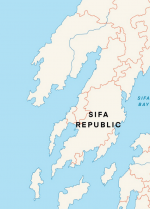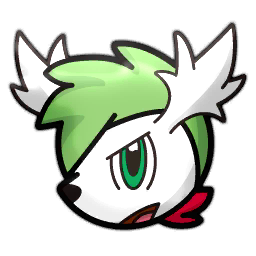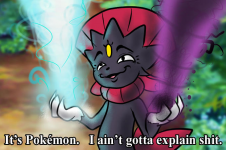big post ahoy! only answering the ones i think are interesting in order to catch up here. i focused on particular groups/civilizations for most of them so i didn't spend a million words rambling about every detail.
5. what sorts of civilizations fill your world?

gonna zoom in on the western peninsulas a bit for this one, and the sifa (ish) people who inhabit it. this is an area i've had a lot of fun fleshing out lately because it's something i feel i don't see very often in fantasy settings. the deal here is that the peninsula in general is sort of a very loose federation of disparate states—think like a shittier EU. lots of the coastal and southern areas are filled in by various city states, most of them maritime merchant republics. however, a lot of the inland areas, particularly in the north, are just... not really incorporated into any sort of state. a lot of the people filling in the gaps here are members of peasant communes.
these communes partition their land into a number of plots of varying degrees of fertility, and each household is permitted an amount of each plot's land proportional to their household size. (this piecemeal division, spread across various plots rather than simply allotting each household a discrete chunk of land ensures that no single household will receive a more fertile plot than any other.) traditions vary by region, but generally internal matters—including law—are handled communally as well, particularly by councils composed of the commune's heads of house. hundreds of these communes exist, and more are being formed all the time as villages outgrow their geography and young families strike out for a new life. mobile traders, carrying on the caravan tradition of their desert-wandering ancestors, do business with these communes, purchasing their surplus and offering them processed or manufactured goods from the city states to the south.
life in the communes is certainly not idyllic, however. while production is collectivized and egalitarian, power struggles within the communes are very real and can become violent, and many of the communes experience growing pains as well. border friction is common, and if a commune suffers from crop failure one year, the next door neighbor's successful crops suddenly appear quite appealing. marriage is also tricky within these fairly insular communities, and immigration away from the communes to the southern city states can prevent production issues.
6. how does gender & sexuality work in your world?
just a couple notes here. certain southern marsh tribes have a sort of hybrid gender system, combining chosen gender with biological sex in a sort of 2x2 matrix (plus one!).
five genders exist in most such tribes: masculine men, feminine men, masculine women, feminine women, and then the shamans, which are considered "outside" of gender so to speak and occupy their own unique position. certain social roles are placed upon you depending on your biological sex, so hence the distinction between masculine men and masculine women, for example—childbirth has presented a total merger in that respect, but one's chosen gender ultimately has more bearing on one's social position than their assigned one, and e.g. masculine men and masculine women are considered more similar to one another than e.g. masculine men and feminine men. strict social conventions still apply wrt gender—heterosexuality is the socially enforced norm, keeping in mind that this is on the basis of chosen gender, with biological sex not factoring in at all. in more conservative communities, all women are expected to produce children, even if their romantic partner is AMAB; in this sense, reproductive partners are not 1:1 with romantic ones.
in derriland, gender is pretty boring boy-gril stuff. a lot of the roles grow out of the derrish obsession with competition, martial ability, and power projection. women are perceived as physically inferior to men in derriland, so you can kind of guess what sort of gender roles spring forward from that—they're probably familiar to you. however, derrish gender roles are flexible in the sense that if a woman manages to overcome the societal obstacles set against her and prove her strength, her authority
will be respected—it's power projection that matters first and foremost in derrish society. there have been plenty of woman leaders in derrish history, military or otherwise, but it bears repeating that society is stacked against them in this regard. powerful derrish female leaders shutting up their prejudiced detractors play a somewhat major role in the story, as the current king of derriland's only heir is a woman.
9. what religion and cosmology exists in your world?
a common figure in many of auspice's religion is referred to in the sifa tradition as the "wispfather." alternately a world spirit, a living mountain, a subterranean dragon, and an ancient, white-feathered
cliffknot, the wispfather is generally described as an unknowably ancient being worshipped even by the birds, and is widely associated with birth and rebirth. he is commonly described as fashioning the souls of all living things from the smoke generated by the burning of the dead, hence his name. the derrish associate the wispfather with a draconic demon from their pre-auspice mythology, and consider him evil.
the ancient sifa religion of the Qahn also reveres the Qahn itself as an agent of a destructive yet loving god—the storm wreaks extreme destruction, but it also cycles huge amounts of sediment and contributes to the fertility of the continent. some northern marsh tribes describe the Qahn similarly, characterizing the storm itself as a god of wrathful but righteous justice. this god is sometimes depicted as an enormous theropod. an analogous god is known to a handful of the most southerly marsh tribes, who describe a similarly enormous and righteously angry theropod who roams the sagewood, killing those who take excessively of the rainforest's bounty.
snow, which is a rarity on auspice, is associated with death and the afterlife. many believe the spirits can be communed with during snowfall. the isle of angels, an ice-covered isle in the northeast, receives its name from this association.
14. what do people eat in your world?
most of the crops on auspice are pretty familiar, many of them having been brought along by off-world colonizers thousands or millions of years ago. wheat, barley, apples, etc. are common. seeds are a major staple in most diets, moreso than in diets in our world, as plants bearing many seeds were cultivated widely on the world during its sanctuary days in order to provide food for the many seed-eating birds. fish is widely consumed in most areas.
auspice has some interesting livestock. the sandhen, a species of turkey-like fowl endemic to the great desert, was domesticated early on by the sifa. domestication has caused them to grow quite a lot larger than their desert habitat could naturally support—they're probably twice the size of a turkey on earth, with large eggs that make a hell of an omelette. every part of the sandhen is eaten in the northern areas where it is a staple, and the vibrant feathers of the males are incorporated into ceremonial dress.
my favorite livestock animal in auspice is the giant rock dove, a humongous relative to the bird more commonly referred to on earth as the pigeon. they've been bred to pretty absurd sizes, about as tall as a dairy cow, and have pretty monstrous appearances, looking like a strange combination of a pigeon, a dodo, and a chubby t-rex. they produce a
ton of meat as you'd expect, but—here's the best part—they produce
milk. this isn't even something i've made up; pigeons and some other birds really do feed their chicks
an extremely fatty substance functionally similar to milk. these pigeons, naturally, have been bred to produce a lot of it, basically all the time, and it's a major part of derrish cuisine. most other cultures understandably think it's pretty gross to eat pigeon spitup.



